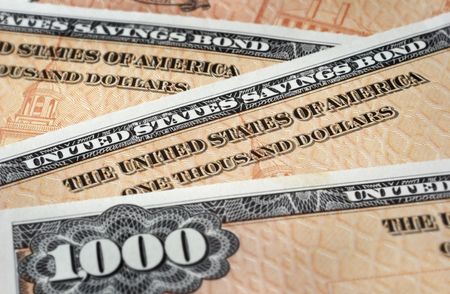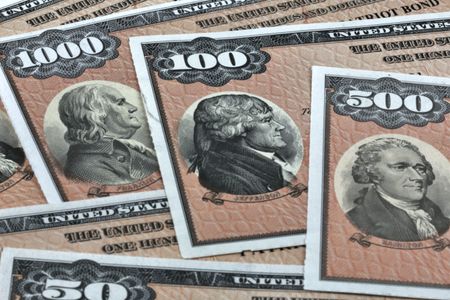ETF Pioneer Focuses on Big Tech
The fund known as Qubes tilts toward large growth companies by tracking the Nasdaq 100.
One of the biggest and oldest exchange-traded funds, PowerShares QQQ (symbol QQQ) is a low-cost and easy way to invest in large-company growth stocks in general and big technology firms in particular. Tech accounts for a whopping 64% of the ETF's assets.
QQQ has a distinct personality. It tracks the Nasdaq 100 index, which consists of the 100 largest stocks, ranked by market value, on the Nasdaq Stock Market. The index includes both U.S. and foreign firms but excludes financial stocks. With Nasdaq the preferred exchange for tech and biotech companies, the index typically holds some of the market's hottest growth stocks.
(Editor's Note: After the April 29 market close, NASDAQ will rebalance the index to reduce the outsized role of Apple (AAPL). The tech titan now accounts for about 21% of the index's -- and the ETF's -- assets. The change will drop Apple's share of the index and ETF to a still hefty 12%. For more about the company, see Apple: The Core of Every Portfolio?)

Sign up for Kiplinger’s Free E-Newsletters
Profit and prosper with the best of expert advice on investing, taxes, retirement, personal finance and more - straight to your e-mail.
Profit and prosper with the best of expert advice - straight to your e-mail.
Among its nontech holdings, QQQ includes well-known companies such as Starbucks, Comcast and Israel's Teva Pharmaceutical. One of its quirks is that it owns no energy stocks.
Not surprisingly, QQQ is volatile. Over the past five years, it has been about 20% jumpier than Standard & Poor's 500-stock index. Surprisingly, QQQ lost less than the S&P 500 during the 2007-09 bear market, falling 51.6%, compared with the S&P 500's 55.3% drop.
As for the odd name, the ETF originally traded on the American Stock Exchange as Nasdaq 100 Index Tracking Stock under the symbol QQQ. Traders called it the triple Q, or "Qubes," for short. When the ETF moved to Nasdaq in 2004, it needed a four-letter ticker, so an extra Q was added. In 2006, PowerShares bought the ETF from Nasdaq and renamed it PowerShares QQQ. (Editor's Note: The ETF retained the quadruple-Q ticker until March 23, 2011, when the symbol was changed back to QQQ.)
Get Kiplinger Today newsletter — free
Profit and prosper with the best of Kiplinger's advice on investing, taxes, retirement, personal finance and much more. Delivered daily. Enter your email in the box and click Sign Me Up.
-
 Stagflation: What It Is and Why Retirees Should Care
Stagflation: What It Is and Why Retirees Should CareStagflation — the economic bogeyman of the 1970's — may return to the US. Here's what it could mean to your retirement.
By Donna Fuscaldo Published
-
 Why Losing Your Job Could Be the Best Opportunity to Plan Your Future
Why Losing Your Job Could Be the Best Opportunity to Plan Your FutureAmid this uncertainty lies an opportunity for strategic reassessment and personal growth.
By Mario Hernandez Published
-
 Best Banks for High-Net-Worth Clients 2024
Best Banks for High-Net-Worth Clients 2024wealth management These banks welcome customers who keep high balances in deposit and investment accounts, showering them with fee breaks and access to financial-planning services.
By Lisa Gerstner Last updated
-
 Stock Market Holidays in 2025: NYSE, NASDAQ and Wall Street Holidays
Stock Market Holidays in 2025: NYSE, NASDAQ and Wall Street HolidaysMarkets When are the stock market holidays? Here, we look at which days the NYSE, Nasdaq and bond markets are off in 2025.
By Kyle Woodley Last updated
-
 Stock Market Trading Hours: What Time Is the Stock Market Open Today?
Stock Market Trading Hours: What Time Is the Stock Market Open Today?Markets When does the market open? While the stock market does have regular hours, trading doesn't necessarily stop when the major exchanges close.
By Michael DeSenne Last updated
-
 Bogleheads Stay the Course
Bogleheads Stay the CourseBears and market volatility don’t scare these die-hard Vanguard investors.
By Kim Clark Published
-
 The Current I-Bond Rate Until May Is Mildly Attractive. Here's Why.
The Current I-Bond Rate Until May Is Mildly Attractive. Here's Why.Investing for Income The current I-bond rate is active until November 2024 and presents an attractive value, if not as attractive as in the recent past.
By David Muhlbaum Last updated
-
 What Are I-Bonds? Inflation Made Them Popular. What Now?
What Are I-Bonds? Inflation Made Them Popular. What Now?savings bonds Inflation has made Series I savings bonds, known as I-bonds, enormously popular with risk-averse investors. So how do they work?
By Lisa Gerstner Last updated
-
 This New Sustainable ETF’s Pitch? Give Back Profits.
This New Sustainable ETF’s Pitch? Give Back Profits.investing Newday’s ETF partners with UNICEF and other groups.
By Ellen Kennedy Published
-
 As the Market Falls, New Retirees Need a Plan
As the Market Falls, New Retirees Need a Planretirement If you’re in the early stages of your retirement, you’re likely in a rough spot watching your portfolio shrink. We have some strategies to make the best of things.
By David Rodeck Published